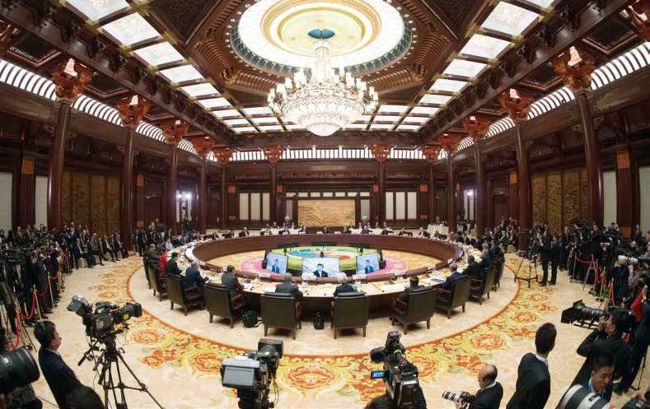From Blueprint to Reality?
With a high-profile summit for the Belt and Road initiative, China aims to transform the project into a multilateral platform which experts say serves to reform the current globalisation model
By Yu Xiaodong

Chinese President Xi Jinping chairs the Leaders’ Roundtable Summit at the Belt and Road Forum for International Cooperation at Yanqi Lake International Convention Centre, Beijing, May 15, 2017
Belt and Road Forum
On May 14 and 15, the Belt and Road Forum for International Cooperation, perhaps China’s highest-profile diplomatic event of the year, was held in Beijing. The forum was attended by 30 world leaders and official government representatives from more than 30 other countries, as well as representatives from non-governmental organisations from more than 130 countries and 70 international organisations.
Belt and Road
First launched in 2013, the Belt and Road initiative is a signature foreign policy initiative of Chinese President Xi Jinping. The initiative comprises two components, the Silk Road Economic Belt (the Belt) and the 21st-century Maritime Silk Road (the Road). Together, the project aims to create a web of infrastructure, including roads, railways, telecommunications, pipelines and seaports, and to enhance economic interconnectivity and growth in the regions along the Belt and Road routes.
To facilitate the initiative, China established the US$40 billion Silk Road Fund, which, alongside the multilateral Asian Infrastructure Investment Bank (AIIB), serve the two as financial vehicles for infrastructure projects under the framework of the Belt and Road initiative.
During the summit, China signed agreements and deals with a total of 68 countries and international organisations under the Belt and Road framework, including Greece, Poland, Russia, Turkey, Thailand, Nepal, Sri Lanka, Egypt and Argentina.
Besides the bilateral and multilateral deals reached during the summit, China made new pledges to further boost funding for the project, including an additional 100 billion yuan (US$14.5bn) into the Silk Road Fund. In the meantime, the China Development Bank and China’s Export-Import Bank will set up new lending schemes of 250 billion yuan (US$36.2bn) and 130 billion yuan (US$18.8bn) respectively, for relevant Belt and Road projects. China also pledged to provide 60 billion yuan (US$8.7bn) in development aid in the next three years to countries along the Belt and Road region.